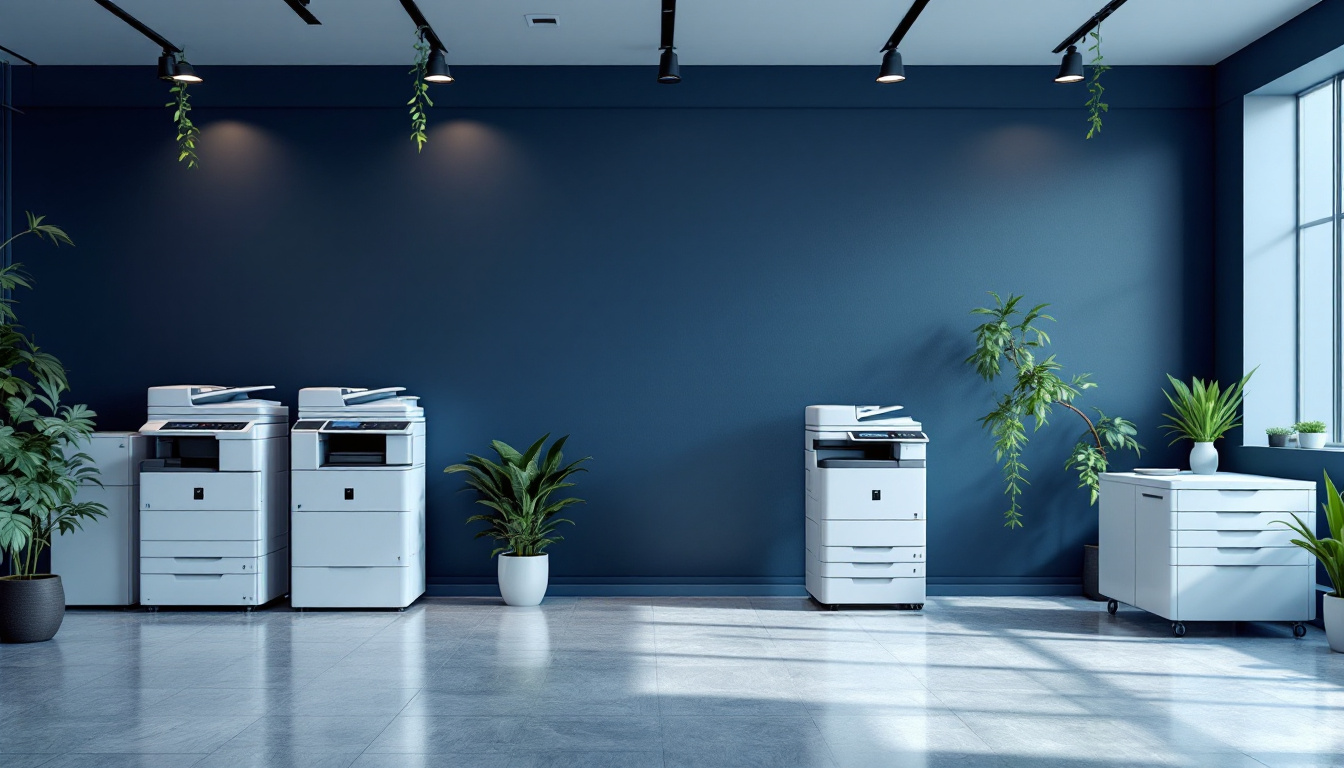Introduction to Healthcare Copier Solutions and Regulatory Standards
In the fast-evolving landscape of healthcare, the integrity, security, and confidentiality of patient data are paramount. Copier and document management solutions tailored for healthcare settings play a crucial role in maintaining compliance with stringent regulations like HIPAA. As technology advances, modern copiers and printers now incorporate sophisticated security features designed to protect sensitive health information while streamlining workflows. This article explores the features, security best practices, and strategic approaches necessary for healthcare organizations to employ copier and printing solutions that uphold compliance and facilitate efficient patient care.
Advanced Security Features in Modern Healthcare Copiers and Printers

What features of modern copiers and printers help healthcare organizations maintain HIPAA compliance?
Healthcare organizations rely heavily on advanced security features in their copiers and printers to uphold HIPAA standards. These devices are equipped with data encryption methods such as AES 256-bit encryption, which secures information both during transmission and storage. This ensures that sensitive patient data, known as protected health information (PHI), remains confidential.
Secure print release options are also vital. Features like PIN codes, follow-me printing, or mobile authentication allow users to release print jobs only when they are physically present at the device. This prevents unauthorized individuals from accessing confidential documents left unattended on the printer tray.
User authentication methods—such as ID badges, biometric scans like fingerprints, or access codes—serve as additional layers of security. They verify the identity of users before granting print or copy access, further reducing the risk of data breaches.
Audit trails and activity monitoring enable healthcare providers to track who accessed or printed specific documents and when. Regular monitoring and logging activities support compliance and accountability.
Finally, secure data erasure and hard drive overwriting capabilities protect stored data from residual traces once a device is decommissioned or documents are no longer needed. These features collectively help maintain HIPAA compliance, safeguarding sensitive patient data at every step of the document handling process.
Secure Data Handling, Storage, and Disposal Practices

How can copier solutions support the secure handling, storage, and disposal of sensitive patient data?
Modern copier solutions are equipped with comprehensive security features that help healthcare providers protect patient information at every stage. Encryption of internal hard drives is fundamental, ensuring that data stored on the device remains unreadable in case of theft or unauthorized access.
Automated data overwriting further enhances security by continually deleting temporary files and encrypted data after use. This prevents residual information from being recovered during device maintenance or decommissioning.
Secure print release options, such as entering a PIN code, using RFID badges, or biometric authentication, guarantee that only authorized personnel can access printed or scanned documents. This reduces the risk of accidental data exposure or HIPAA violations.
Network security measures are essential as well. Practices like installing firewalls, regularly updating firmware, disabling unused ports, and monitoring device activity help prevent cyberattacks and safeguarding data in transit.
When it comes to disposing of old or obsolete devices, certified data erasure processes are crucial. These include secure digital wiping methods and physical destruction to ensure no recoverable information remains. Physical destruction can involve shredding or degaussing hard drives.
Implementing these security practices, along with staff training and maintaining detailed audit trails, creates a compliant environment aligned with HIPAA regulations. It ensures that sensitive patient data is managed responsibly throughout its lifecycle, reducing operational risks and protecting patient privacy.
Role of Regulatory Guidelines and Compliance Frameworks

What are the regulatory considerations and guidance for healthcare-related printing and copying solutions?
Healthcare providers need to carefully consider regulatory requirements when deploying printing and copying solutions to ensure patient information remains protected and compliance is maintained. The Health Insurance Portability and Accountability Act (HIPAA) sets the foundation for safeguarding electronic protected health information (ePHI). The HIPAA Security Rule specifically mandates a series of security measures designed to protect ePHI during all stages, including printing, copying, scanning, and digital storage.
One of the main requirements involves conducting comprehensive risk assessments to identify vulnerabilities within the document handling environment. Based on these assessments, organizations must implement appropriate control measures such as access controls, authentication protocols, data encryption, and audit controls. These measures help prevent unauthorized access and data breaches.
Organizations are also advised to integrate secure document management systems (DMS) that support user permissions, version control, and encrypted storage. Such systems bolster the security of sensitive information and facilitate compliance with HIPAA.
Furthermore, establishing robust policies and procedures tailored to organizational needs, size, and complexity is crucial. These policies should define how documents are printed, stored, transmitted, and disposed of, ensuring ongoing security and regulatory adherence.
Training staff regularly on HIPAA compliance and best practices in document security is essential. Regular audits and security reviews help track compliance effectiveness and identify areas for improvement.
In summary, healthcare organizations must align their print and copy workflows with HIPAA regulations by adopting secure, audit-friendly technologies, establishing clear policies, and fostering an organizational culture that prioritizes data protection. This comprehensive approach ensures sensitive patient data remains confidential and protected at all times.
Benefits of Upgrading to Modern Print Technologies

In what ways can upgrading print technology improve workflows and compliance in healthcare environments?
Upgrading print technology in healthcare settings offers numerous advantages that directly impact workflow efficiency and regulatory compliance. Modern copiers and printers equipped with advanced security features, such as user authentication, data encryption, and secure print release, help protect sensitive patient information, aligning with HIPAA requirements. These devices also support integration with electronic health records (EHR) and other health IT systems, enabling seamless and secure data exchange.
One significant benefit is the ability to produce customized medical documents and models on demand. High-resolution printers allow the creation of complex surgical guides, anatomical models, and patient-specific devices quickly, reducing lead times and improving surgical planning and patient outcomes.
Furthermore, these advanced tools minimize waste by converting paper-based processes into digital workflows, reducing inventory and transportation costs. They also lower operational costs through print monitoring and equipment consolidation. Secure features like automatic document erasure and activity tracking ensure compliance with legal standards and protect patient privacy.
Overall, modern printing solutions streamline administrative and clinical workflows, enhance document security, and ensure adherence to healthcare regulations. This results in more efficient, accurate, and compliant healthcare delivery, ultimately improving patient safety and care quality.
Comparison of Copier and Document Management Solutions for Healthcare Facilities
How do copier and document management solutions compare for healthcare facilities?
Healthcare facilities require robust and secure document management solutions to handle sensitive patient information effectively. Modern copiers and multifunction printers (MFPs) equipped with advanced security features like encryption, user verification through ID badges, fingerprint scans, or codes, are essential. These capabilities help ensure compliance with HIPAA regulations by protecting data from unauthorized access.
Reliability and uptime are critical, especially in busy healthcare environments. Vendors like Ricoh emphasize the importance of local service technicians to maintain device performance and reduce downtime. Secure cloud services and management platforms, such as those offered by Xerox® Healthcare Solutions and BDS, facilitate data management, sharing, and storage while maintaining HIPAA compliance.
Integration with electronic health records (EHR) and other health IT systems is a core feature of solutions like Xerox's EHR connection, Kno2, and Sharp’s workflow platform. These integrations streamline workflows by enabling direct scanning to EHRs, secure document exchange, and automatic audit trails, reducing human error.
Cost considerations and scalability are also vital. Managed Print Services (MPS) such as BDS help healthcare providers control costs through print monitoring, consolidating equipment, and customized service plans suited for high-volume environments.
Specialized printers, including wristband or mobile printers, support on-the-spot patient management and improve hygiene by enabling touchless printing. These devices are especially useful for quick workflows in clinical areas.
Ultimately, the choice between solutions hinges on specific needs: high-volume secure printing, seamless EHR integration, minimal downtime, and the capacity to accommodate future growth. A comprehensive approach combining secure copiers, managed print services, and specialized devices can significantly boost operational efficiency while maintaining strict compliance standards.
Conclusion: Securing and Streamlining Healthcare Documentation
Effective copier solutions tailored for healthcare are vital in supporting compliance, protecting patient data, and enhancing operational efficiency. Incorporating advanced security features such as encryption, secure print release, and audit trails helps safeguard sensitive information and meet regulatory standards like HIPAA. Regular staff training, secure disposal practices, and the adoption of Managed Print Services further strengthen security and streamline workflows. As healthcare providers upgrade their technological infrastructure, they can expect improved productivity, reduced risks of data breaches, and better patient care outcomes. Emphasizing compliance, security, and efficiency in printing and document management is essential for modern healthcare organizations aiming to deliver secure, compliant, and efficient services.
References
- How Can a Modern-Day Copier Help with HIPAA Compliance?
- Xerox ® Healthcare MFP Solution
- Copiers for Healthcare - PiF Technologies
- Healthcare Technology Solutions: Improving Patient Care
- Office Printing Solutions: Copiers and Printers for the Modern ...
- Printer and Copier Solutions for Healthcare - Ameritel Corporation
- Copier & Printer Services For Healthcare Providers in Orange ...































